by Amineddoleh & Associates LLC | Sep 29, 2023 |
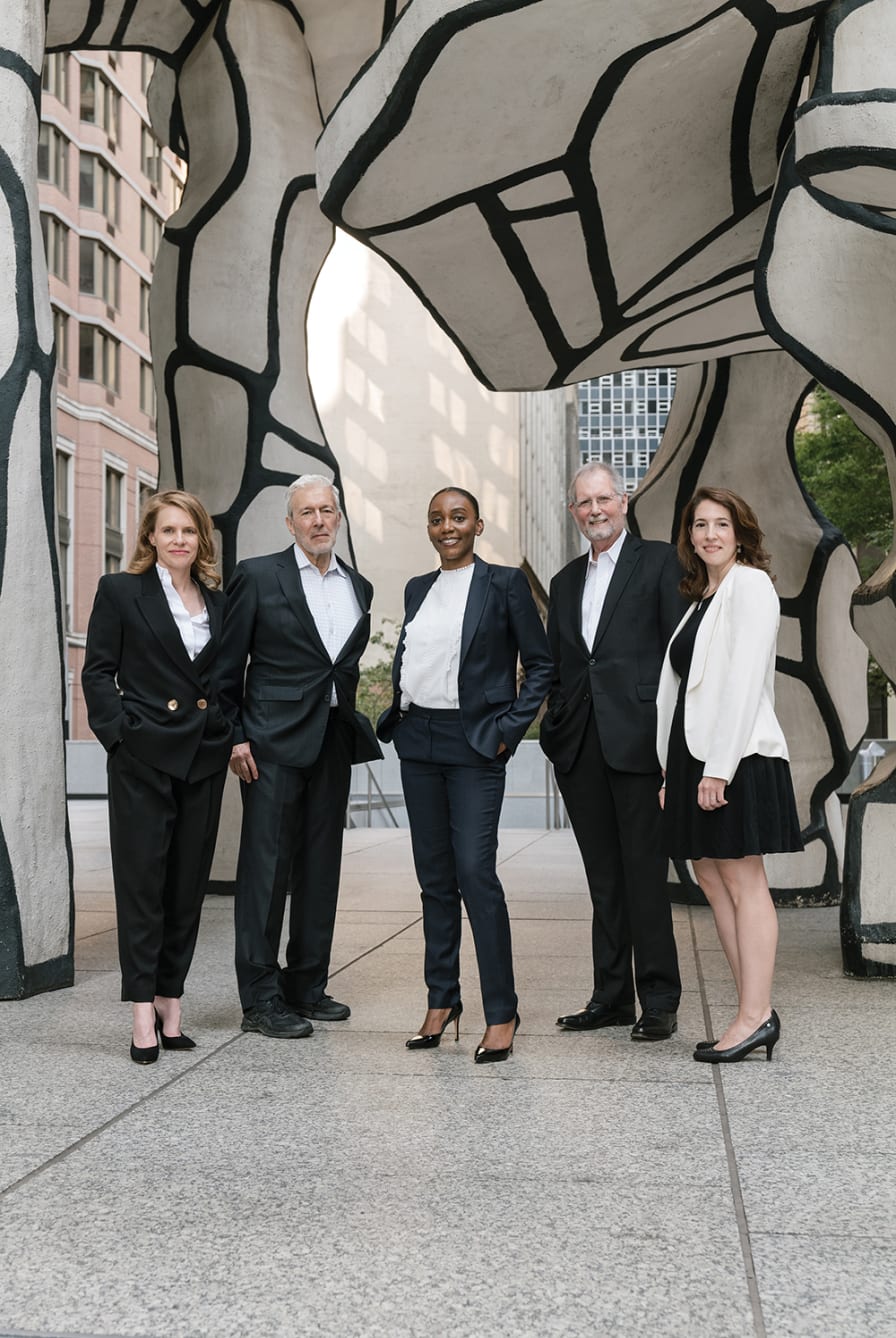 Our founder, Leila Amineddoleh, has recently been featured in New York Metro Super Lawyers Magazine, alongside other leaders in her field. Leila was chosen for the piece as a top-rated intellectual property, art, and cultural heritage lawyer well-known in the industry for getting the job done right. This means advocating both for her clients, and for the art and cultural heritage at issue.
Our founder, Leila Amineddoleh, has recently been featured in New York Metro Super Lawyers Magazine, alongside other leaders in her field. Leila was chosen for the piece as a top-rated intellectual property, art, and cultural heritage lawyer well-known in the industry for getting the job done right. This means advocating both for her clients, and for the art and cultural heritage at issue.
In the article, Leila’s experience working with our former client (and now current friend) Laura Young, is highlighted. Young is our client who found an Ancient Roman marble bust at her local Goodwill in Austin, TX. Our firm has written previously about Leila’s and Laura’s story. Read the incredible journey one Roman bust took from Germany to Texas (and how he found his way home) here.
In the piece by Super Lawyers, Leila’s success working with Laura is illustrative of her signature manner taking care of her clients by providing insight on best practices in the art law field. In Leila’s words, her work as a lawyer requires giving this special level of attention. She says it can require coming up with “creative solutions . . . . As a lawyer, you find out what’s important to someone.”
Later in the article, Leila gives her thoughts on changing attitudes on lawsuits involving stolen antiquities. She connects the rise of modern lawsuits brought by claimants for contested works to a 1995 international investigation in Italy. That investigation exposed many thought-to-be honest dealers as thieves, and revealed and auction houses to be engaging in deceptive practices. Leila explains how the impact of this investigation continues to call objects held by museums, collectors and auction houses into question, leading to an on-going return of hundreds of objects and works of art.
Leila’s success has launched her and her namesake firm to even greater heights. It is an honor to be featured alongside other esteemed colleagues this stand-alone piece. In it, Leila and her colleagues give important guidance on the current industry challenges for art lawyers. Read the piece here.
by Amineddoleh & Associates LLC | Jul 24, 2023 |
Art Nouveau fans rejoice: July 24th is the late Alphonse Mucha’s birthday. This year’s anniversary comes with a bit less fanfare than his 150th in 2010, when Google created a doodle on the artist’s behalf.
But even without a doodle from Google, Mucha’s legacy continues to influence art and artists around the world. One aspect of his enduring legacy is how his work influenced the rise of celebrity art. This phenomenon has been popping up more and more frequently in American culture, and no one (not even celebrities themselves) are immune from the draw of star power.
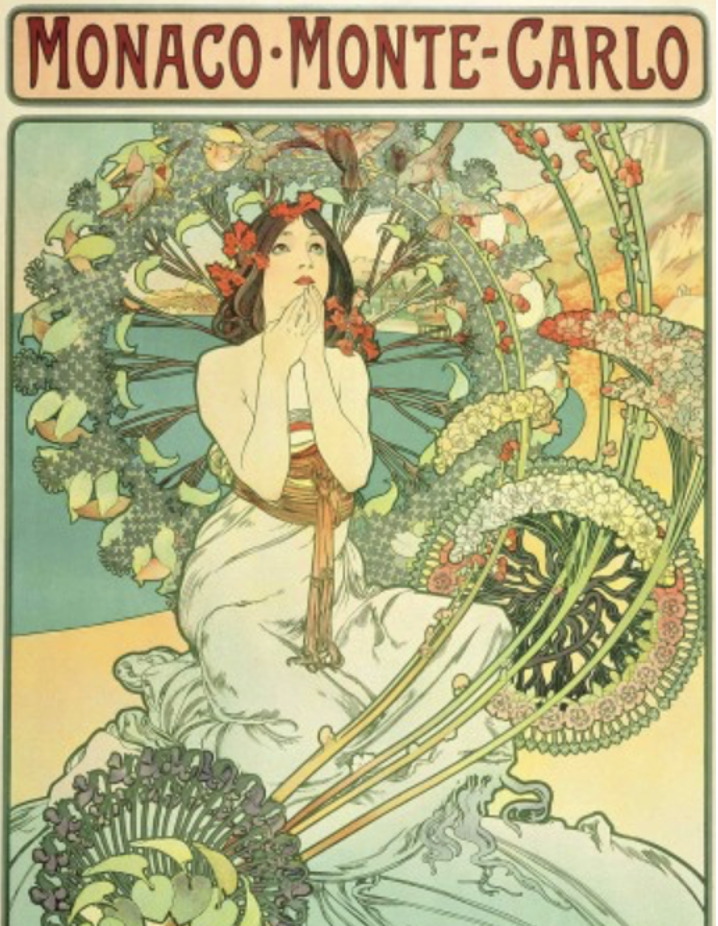
Modern Celebrities Embrace Art
No longer playing the role of pirate, actor Johnny Depp has swapped his sword for a paintbrush in real-life. It seems to have been a sound business move. The actor made a staggering $3.6 million selling works from his first “Friends & Heroes” art collection in 2022. His second, entitled “Friends & Heroes II” was released in February. It is comprised of four portraits of artists that have inspired Depp throughout his life: Bob Marley, Health Ledger, River Phoenix, and Hunter S. Thompson. An unbelievable answer to the classic “Dream guests at a dinner party?” question, if ever one existed. Almost already entirely sold out – all that remains on the Castle Fine Art website is a pack of all four prints, priced at a swashbuckling $20,416.67.
Depp’s foray into celebrity art highlights modern culture’s fascination with all-things celebrity. Are Depp’s works prized due to his creative talent as an artist? Or are the pieces selling because they are exclusively of famous celebrities? Or, possibly, Depp is able to sell out faster than Taylor Swift tickets because he, himself, is a celebrity? Which points to the threshold question: when did artists begin to feature celebrities in art? Many art historians look no further than the incredibly gifted Alphonse Mucha, who skyrocketed his own career to greater heights through his collaboration with a famous actress.
Rise of Celebrity Art
“If you have to explain to someone you’re famous, then you’re technically not that famous.”- David Spade.
The beauty of Alphonse Mucha‘s work stems from his deep passion as an artist. Many artists are known for having a lot of gusto, but Mucha really takes the cake. He was master of the Art Nouveau style of art, so masterful in fact that many credit his career for influencing major tenants of the age – politics, religion, philosophy, and – of all things – the career of one very famous actress named Sarah Bernhardt.
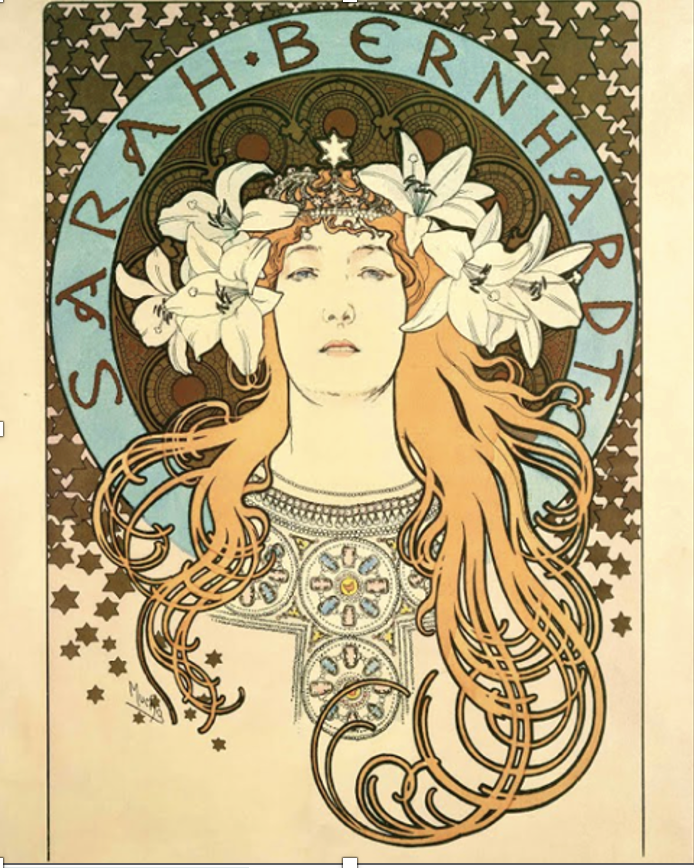
Alphonse Mucha, Poster for ‘La Plume’ magazine (1897). Image via muchafoundation.org.
Before we get to Sarah, a little more about our man Mucha. He was born on July 24, 1860, in a quiet town in Moravia. In his youth, Mucha was – in his own words – “preoccupied with observing.” This tendency to notice things around him manifested in a profound artistic talent. Young Mucha could be found making sketches and drawings for friends, family, and fellow townsfolk. His drawings were so prodigious that he collected quite a few fans, even in his early days. One fan was the town’s shopkeeper, who often slipped Mucha free sheets of a paper – a luxury of the day – in order for him to make his creations.
As Mucha grew older, his artistic talent also matured. When he was 18, he was ready to apply to the Academy of Fine Arts in Prague. Unfortunately, he was rejected. The admissions office even went as far to suggest he take up a different, “less artistic” career. I’m not sure what they had in mind (medical school?), but fortunately for us, Mucha was not discouraged for long. He decided to simply carry on and continued to make art in whatever way he could.
A year later, Mucha had a bit of luck – an opportunity arose for an artist to work with a Vienna newspaper making advertisements. The pay was pitiful, and Vienna is freezing cold in winter. However, Mucha forged ahead, desperate to create. He applied, scored the gig, and packed his bags for his journey to the big city.
This was a turning point in Mucha’s development as an artist. He spent two years in Vienna, creating advertisements for the paper by day and taking art classes by night. What this did was cement in him a love for creating artwork that was accessible to the average, everyday person. He thrived on creating beauty in pamphlets, posters, and advertisements that most companies and institutions did not have the time or talent to make elaborate. We can start to see, from this period, the development of certain curvature in his lines, and repetition of old world-inspired motifs come up again and again in works that would inevitably become a part of an ordinary person’s daily life.
Mucha retained this love of creating beautiful and accessible work, while still seeking to enhance his skill as an artist through more formal training. Eventually, he applied to – and was accepted to enroll in – the Academy of Fine Arts in Munich in September of 1885. This provided Mucha with formal artistic skills, though it is important to note that Mucha is still believed to be largely self-taught as an artist (which could also mean that he ignored much of what was taught in school). From Munich, he made his way to Paris: the art capital of the world at the time.
In the City of Lights, he established himself as a “reliable” illustrator (as noted by his biographers). The Paris theater scene is where the lives of Mucha and the phenom Sarah Bernhardt intersect. Sarah Bernhardt is often touted as the original “true superstar.” This is before the current fame-cycle of Hollywood starlets, who now can be seen as a dime a dozen, splashed across the covers of People magazine.
Sarah Bernhardt was the real-deal – a woman with the poise, charisma, and gumption to make a name for herself as an actress against the backdrop of a politically tumultuous city. Not only is she remembered as a strikingly impactful actress, known for her talent, she is also regarded as the first superstar known to personally exploit her own image and likeness for economic gain, and to raise her own fame. This is an important piece of the puzzle of a topic referred to as “publicity,” which we’ll address later.
Mucha began working with Bernhardt in December 1894, in a serendipitous sort of meeting that can only be attributed to fate. Bernhardt’s play, Gismonda, was set to open on January 4th, 1895. On December 26th, 1894 – just a few short days before opening night – the starlet decided that her show needed a new poster to publicize the play. Something dazzling. Something that would leave Paris speechless.
She turned to the manager of a Parisian printing firm for a new poster, pronto. Given the short notice, and the fact that Bernhardt approached the firm in the middle of the Christmas break, Maurice was short on options for the commission. In desperation, he turned to Mucha – truly the only option at hand – and begged him to take on the job. Ever the flexible type, Mucha agreed. And, in doing so, a true collaboration between two legendary artists was born.
The success of Mucha and Bernhardt’s eventual career-long collaboration is likely because the two saw eye-to-eye on Sarah’s talent.
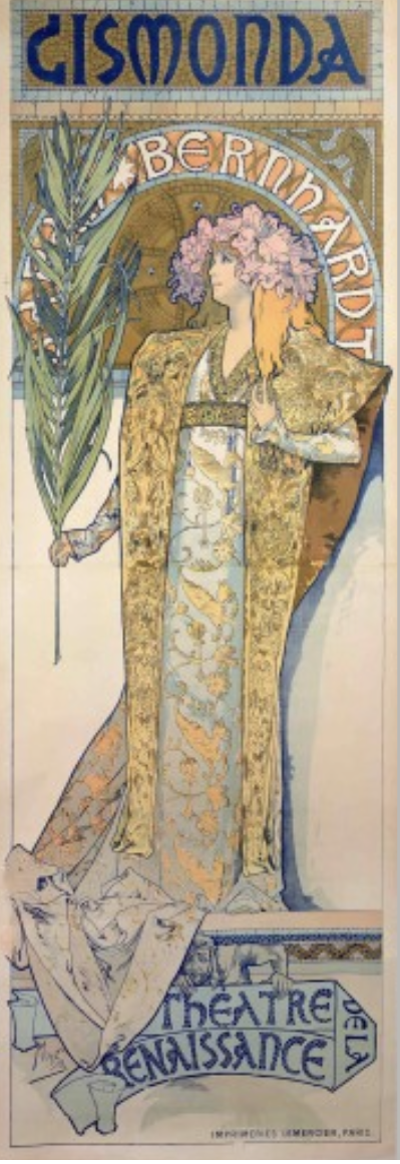
Alphonse Mucha, Poster for ’Gismonda’ (1894). Image via muchafoundation.org.
In other words, Mucha was a fan. In creating the poster for Gismonda, he relied on his personal knowledge of the play itself, as well as his fascination with how Bernhardt depicted the title role. The result? A stunningly ethereal piece that focused the viewer of the poster on the actress herself, rather than on fussy knickknacks in the background. The poster was truly a spotlight on Sarah, in all her glory – and Sarah loved it.
Thus, the two kicked off a mutually beneficial partnership. Bernhardt became Mucha’s artistic muse and mentor in the industry. They also became very good friends. Each seemed impressed by the other’s commitment to creativity, and fervent refusal to be fenced in by artistic norms of the day. Sarah, for her part, pushed the boundaries of Parisian theater by lobbying for politically impactful roles. Mucha, on his end, blazed a trail as a high-end artist for the lower strata of society.
Much of the work Mucha did for Sarah was accessible to the everyday Parisian, because her giant posters were displayed on the street. And, he created many posters of Bernhardt in her various roles throughout the remainder of her career. Because Mucha continued to make Bernhardt the star of each new poster, his work served to elevate her career to even greater heights. In this way, Bernhardt was able to exploit her own image and likeness to increase her status as a public figure – and was one of the first known celebrities to ever do so.
The upside for Mucha was that, because of his work that featured Sarah, he became higher-in-demand as an artist for other jobs. Mucha became more famous and earned more money because he painted someone famous.
Collaboration v. Exploitation
Mucha’s portrayals of Sarah Bernhardt in his artwork were clearly a collaboration. But, using a celebrity’s image in a work of art does bring forth a question: when can an artist legally make use of a person’s image or likeness in a work of art, if use of that image increases the economic value of the work itself?
Modern Legal Framework & Application
To answer this question, two rights come into play. Both come from state, rather than federal law, and are mostly understood through case law.
The first right is called the right of privacy. This means is that private people have the right to prevent the public disclosure of their name and likeness by others. For example, if a company started using a private person’s face as the logo for a brand of salad dressing, that person could bring an action against that company claiming the right of privacy.
The second right, which sounds similar, but functions very differently, is called the right of publicity. That right means that a person has the right to exploit her own image and likeness for her own economic gain. Using the salad dressing example, this is why “Newman’s Own” salad dressing uses his face on the label. His company profits from the use of his public image on its products. The right belongs to Newman’s heirs, because the value of his image is the fruit of his own hard work as a famous actor. (Confusingly, what is referred to as the right of privacy in New York is, in fact, the right of publicity).
Sometimes, the aforementioned rules change if, instead of, as in the example, an advertiser using the celebrity’s image, the person using the celebrity’s image is an artist creating a work of art.
Some courts have held that any work created by an artist, even if it uses a celebrity’s image, is a form of free expression. The First Amendment protects free speech. Included in the many categories of free speech is art – it’s speech, even if it doesn’t make noise.
Courts that have broadly interpreted the First Amendment free speech protection in cases where an artist uses a celebrity’s image in their art have generally permitted it. According to these courts, if artist’s use of the celebrity image is a form of free speech, it is allowed. However, the application of this principle is not as straightforward as it might appear. While some courts have given artists broad discretion under the First Amendment to use celebrities in their works, other courts have sided with celebrity defendants, under the theory that the artist’s work violates the celebrity’s right of publicity.
by Amineddoleh & Associates LLC | May 18, 2023 |
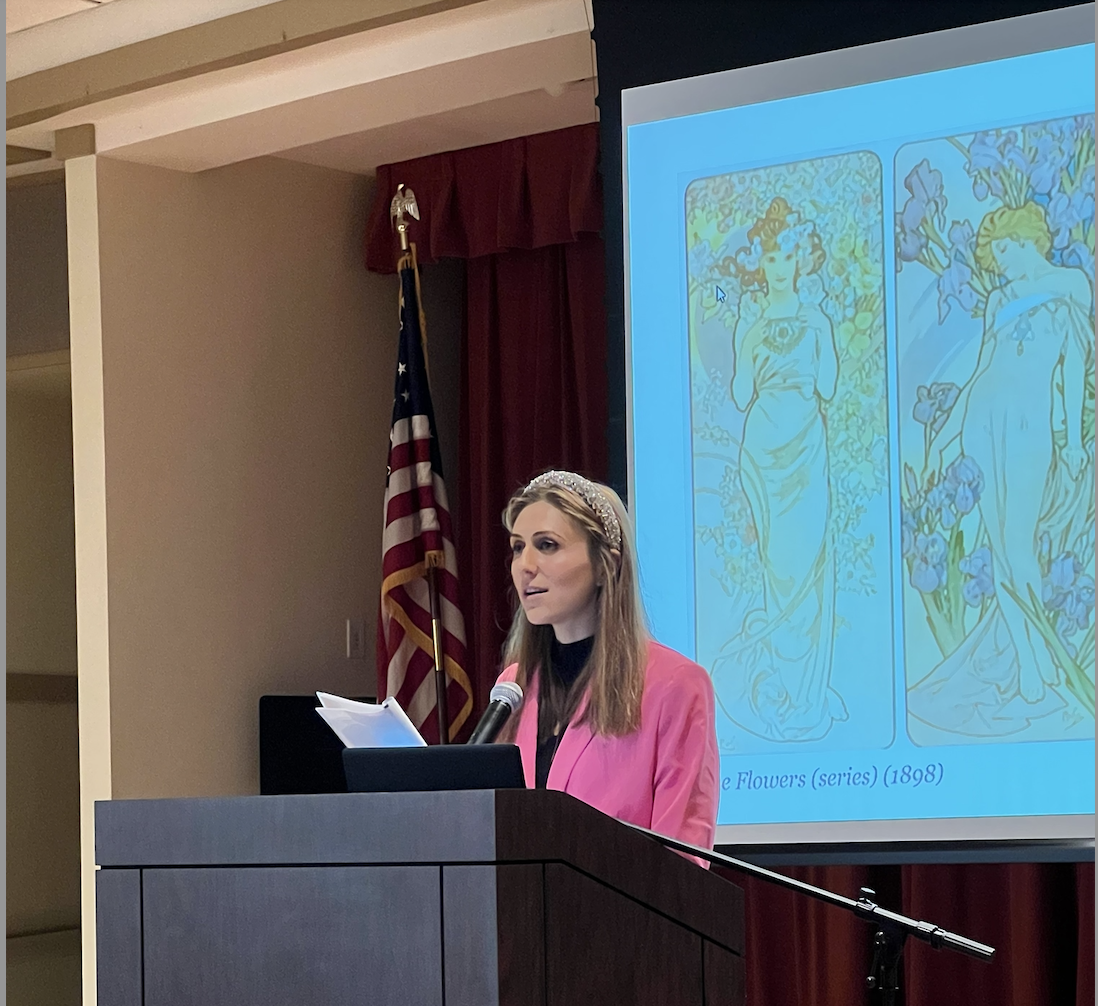
Maria discussing art and the law
Last week, associate Maria T. Cannon presented a lecture in Asheville, N.C. about the rise of celebrity art. Her presentation featured the work of the artist Alphonse Mucha. He is one of the first artists whose career trajectory was shaped through his depiction of a famous actress in his work. Today, artists commonly feature celebrities in their artwork, but this was not the case in the late 19th and early 20th centuries. However, time has shown that the use of celebrity images in artwork often increases the market value of the work. In response, laws have developed to protect celebrities and artists from exploitation.
Maria’s presentation began with the story of Mucha’s life and his relationship with the fabulous Sarah Bernhardt, the first modern celebrity. Maria then examined the legal framework that artists navigate today when they wish to feature images of celebrities in their artwork.
Thank you to the entire Deerfield Community for welcoming our associate to her first speaking engagement. And congratulations Maria!
by Amineddoleh & Associates LLC | Jan 26, 2023 |

Madonna in concert in 2005. Credit: David Cushing, https://www.flickr.com/
Madonna, singer of “Vogue” fame, has been asked to negotiate a loan of an 1822 Jerome-Martin Langlois painting from her personal art collection. The mayor of Amiens requested that the singer loan the work to the Musée de Picardie in the French city. The painting was purchased by Madonna in 1989 at auction, around the time that the singer’s fourth studio album was released. Decades later, in 2015, a museum curator recognized the painting after Madonna was featured in an issue of the weekly publication Paris Match Magazine. The article included a photograph of the “Material Girl” in her home, with the painting visible in the background.
When the curator examined the subject matter of the painting in the photo – a small Cupid in flight dashing between Roman mythological figures Diana and Endymion – a match was made. The painting looked remarkably similar to a work once owned by the Musée de Picardie and thought to have been destroyed by World War I bombings. Further inquiry revealed that the painting once thought lost is very likely the work hanging in Madonna’s home.
Notably, the city of Amiens has not accused Madonna of any wrongdoing, and it is not demanding the restitution of the work. Rather, the city has requested a loan. Such a deal could be fortuitous for both Madonna and the city of Amiens. Madonna would keep the painting in her private collection following the loan, and Amiens could display the painting in its original glory. Moreover, Amiens would no doubt benefit from the added publicity of a loan from such an A-list celebrity. This would be particularly timely for the city, coincidentally gunning to be named the Cultural Capital of Europe in 2028. (Amiens, among other cities such as Brovmov in the Czech Republic and Skopje in North Macedonia, are on the most recent short list for the recognition).
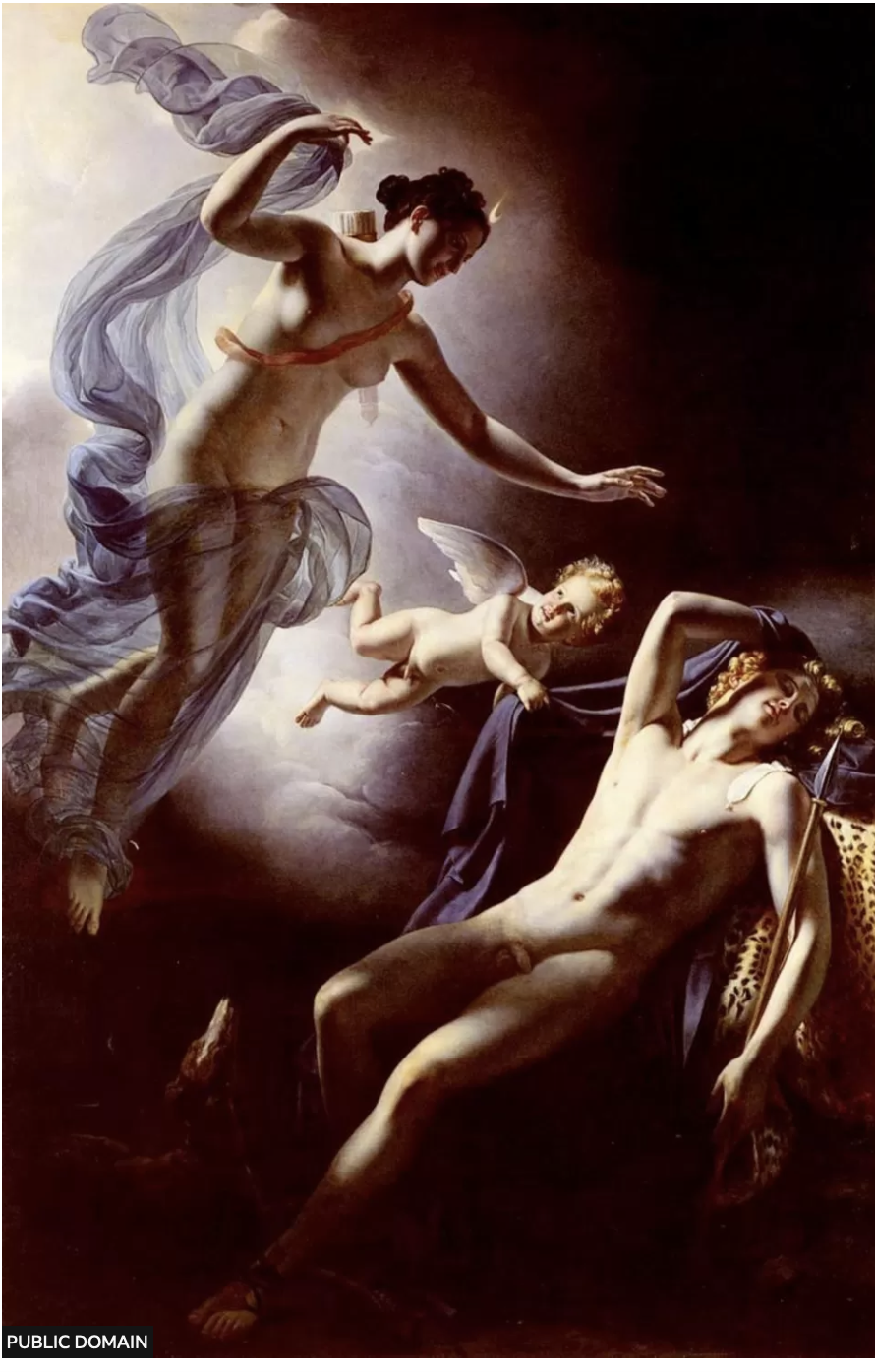
Diana and Endymion, Jérôme-Martin Langlois, 1822, Credit: Public Domain
Madonna has yet to respond to the loan request. Her decision whether to accept or reject the offer to negotiate might be influenced (hopefully, positively) by certain outcomes of other high-profile celebrities who have faced ownership claims against artwork held in their personal collections.
Other Celebrities With Problematic Art
One path for some has been to return the work outright. As we discussed previously, Nicolas Cage returned a dinosaur skull he bought at auction once it was established that it had been illegally excavated. Another 80s icon, Boy George, was keen to return a contested piece to its claimant owner. In 2011, the stylish singer returned an icon to Cyprus, to later be reinstalled in the Church of St. Charalambos. The church’s bishop saw the icon in the background of a video interview filmed in Boy George’s home. He recognized the piece as one stolen from the church following Turkish invasion in 1974. Boy George’s graciousness in returning the piece is heartening (he went on record as “happy [to see] the icon going back to its original home.”
Another path forward for celebrities with problematic artwork is to negotiate in good faith with the claimants, in lieu of lengthy and costly litigation. Take, for example, a piece put up for auction by the stewards of the late Gianni Versace’s private art collection. In 2010, a painting that once hung in Versace’s Lake Como villa was consigned for auction at Sotheby’s in London. The listing, a portrait by Johann Zoffany entitled Portrait of Major George Maule caught the eyes of the direct descendants of the painting’s owner. The descendants contacted the Art Loss Register, who negotiated with Sotheby’s. After what was reported as an amicable mediation, the piece was pulled from auction. The work was returned to its original owners, who were “overjoyed” to be able to hang the painting from their own walls.

Van Gogh’s Vue de l’Asile et de la Chapelle de Saint-Remy, gracing the catalog cover for the sale of Elizabeth Taylor’s collection (Credit: Christie’s LLC)
Negotiating has also proven to be a feasible and mutually beneficial option for the Andrew Llyod Webber Art Foundation. After the Foundation put up a Picasso for auction at Sotheby’s in London, heirs of a Jewish family claimed that the work was sold under duress to the Nazi Party by their ancestor. In 2010, the parties reached an agreement of undisclosed terms (and, as the painting is valued at over $60 million, a substantial award was likely given to the family). Following the negotiations, the family willingly relinquished all ownership claims of the work, and seemingly walked away content with their end of the bargain.
However, some celebrities – either with the budget for litigation or incredibly personal ties to the contested work at issue (or both) – are willing to fight in court. Elizabeth Taylor is one example. She defended herself in litigation after she was contacted about a piece in her personal art collection in 2004. The 1889 work, a Van Gogh painting entitled View of the Asylum and Chapel at Saint Remy, was sold at auction to the actress at Sotheby’s in London in 1963. Decades later, descendants of a Jewish woman named Margarete Mauthner claimed that the painting was rightfully theirs. They asserted that it had been sold by their ancestor under duress by Nazis. The Orkin family sought redress under the 1998 U.S. Holocaust Victims Act, but was barred from recovery due to the statute of limitations. The 9th Circuit upheld the lower court ruling that the Orkin family had missed their chance to claim ownership, and Elizabeth Taylor kept her painting in her L.A. residence.
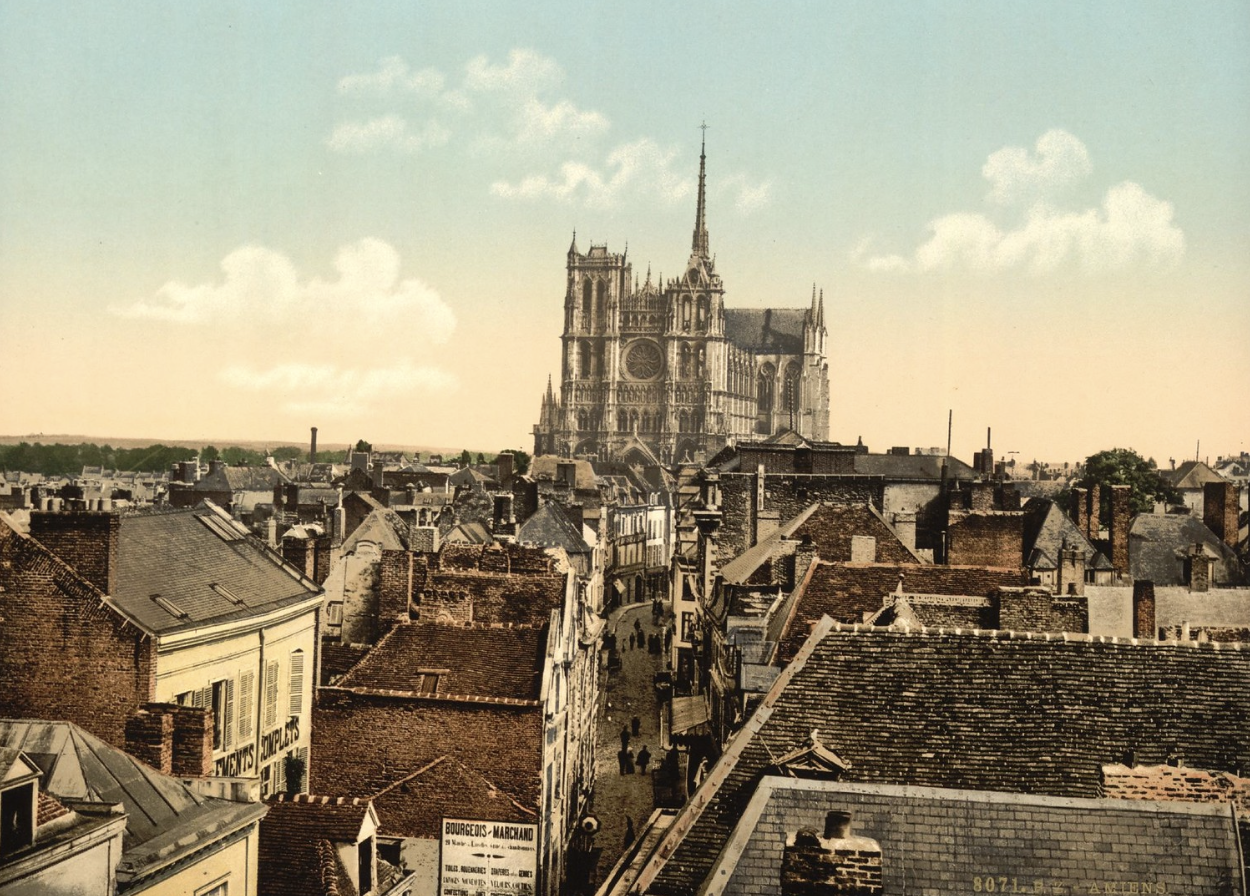
Amiens, France. Credit: Library of Congress, Prints and Photographs Collections, licensed via pingnews
Madonna’s Next Steps
Taylor’s unwillingness to relinquish ownership stands in contrast to the negotiations and settlement offers made by Versace and Andrew Llyod Webber’s Art Foundation. The potential for high-profile art buyers to avoid litigation and to instead reach amicable agreements presents a cooperative path forward and an overall more sustainable approach. These types of mediations, which may include the return of the work, give power and voice to claimants, without demonizing buyers who may have been unaware of the work’s problematic provenance. (This is particularly important in the case of celebrity buyers, who often work through intermediaries.) This ensures that justice is served, and that past traumas are recognized, while promoting the preservation and enjoyment of cultural heritage for generations to come.
The humanizing impact of high-profile celebrities who publicly acknowledge original ownership of a problematic work cannot be understated. When celebrities use their platform to give voice to people whose voices have been silenced, they set in motion healing work in the practicum of art and cultural heritage. What will Madonna do, moving forward? Perhaps she will be inspired to accept the loan offer and cooperate amicably with the City of Amiens.
After all, in the agreement put forth by Amiens, Madonna can still “keep her baby.”
.”
by Amineddoleh & Associates LLC | Dec 14, 2022 |
In this annual newsletter, Amineddoleh & Associates is pleased to share some major developments that took place at the firm and in the art world during 2022.
LITIGATION AND SETTLEMENT UPDATES
The “Goodwill” Marble Bust

The Marble Bust looted during WWII that was found in Texas and will be returned to Germany
Possibly the most talked about art law matter of the year was the return of an ancient marble bust to Germany. The 2,000-year-old artifact likely originated from Rome, but it was acquired by Bavarian King Ludwig I and then placed in a German museum from where it was looted during World War II. Our client, Laura Young, bought it at a local goodwill shop and ultimately returned it to Germany. It was an honor to advise her and work with her to negotiate the internationally celebrated return.
Copyright Infringement Lawsuit
At the start of the year, we filed a litigation in Iowa on behalf of a muralist, Chris Williams. His work was featured in an advertisement that aired during the Super Bowl. We are currently representing him in a lawsuit for copyright and a violation of his moral rights on the Visual Artists Rights Act.
ART & IP NEWS
One of our favorite things about the art market is that there is always something exciting happening in the art world. Some of our most popular blog posts from this year are found below.
Celebrities and Fossil Collecting
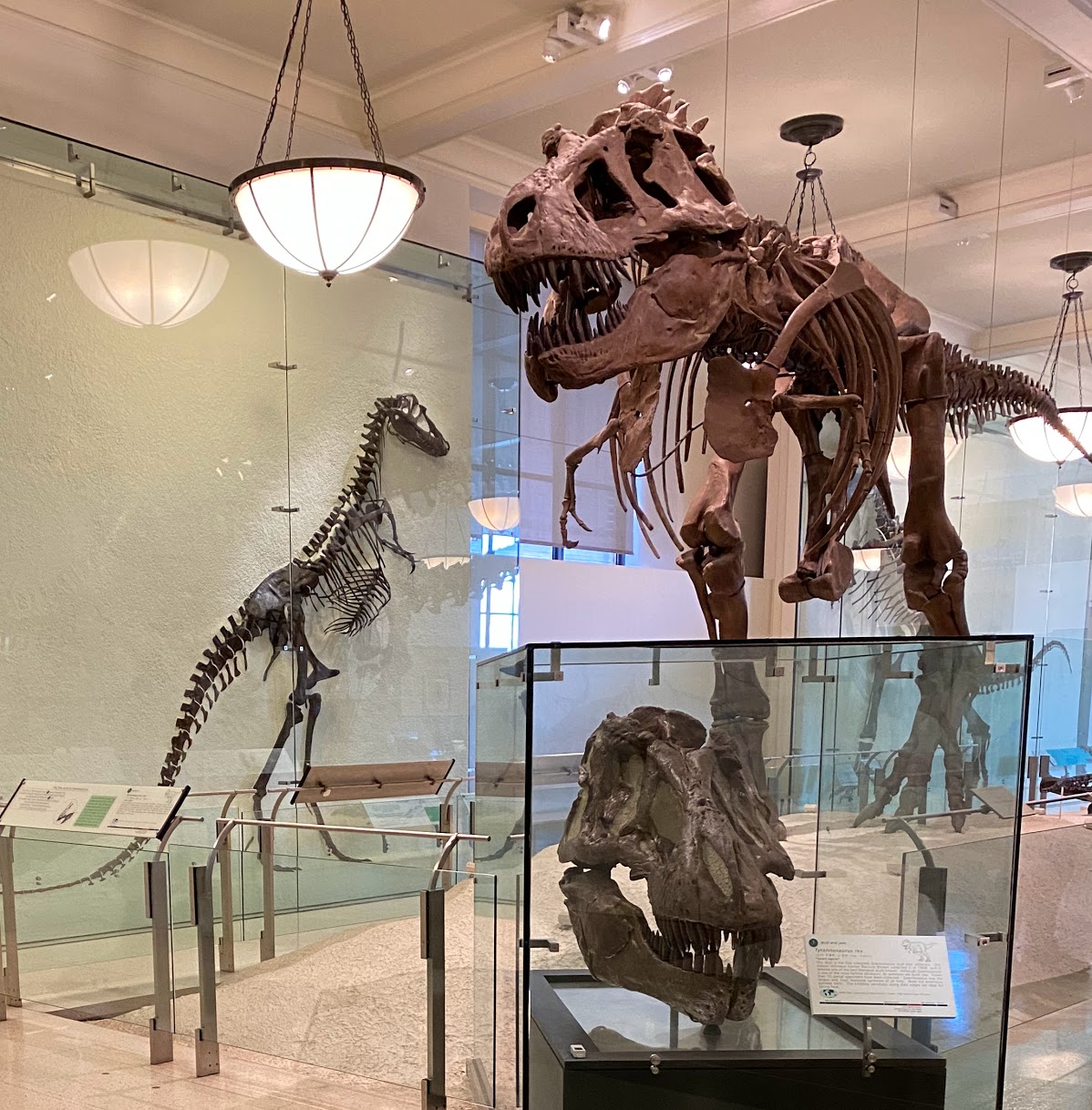
Skeletons in the American Museum of Natural History
In this blog post, our firm examined legal matters involving dinosaur fossils and skeletons, including purchases made by Nicolas Cage, Leonardo DiCaprio, and The Rock. Auction houses have faced growing interest in buyers seeking dinosaur bones. The sales have gotten a lot of attention, perhaps due to the trend of major celebrities making large, public bids for the pieces. As a result of the publicity, countries around the world from which fossils are illegally excavated have presented auction houses with ownership claims, based on their country’s property laws. Copyright law was also an issue for auction houses selling dinosaur skeletons this year because skeletons that are partly comprised of replica bones may come with intellectual property rights in the manufactured pieces.
Fashion Law and Protecting Brands
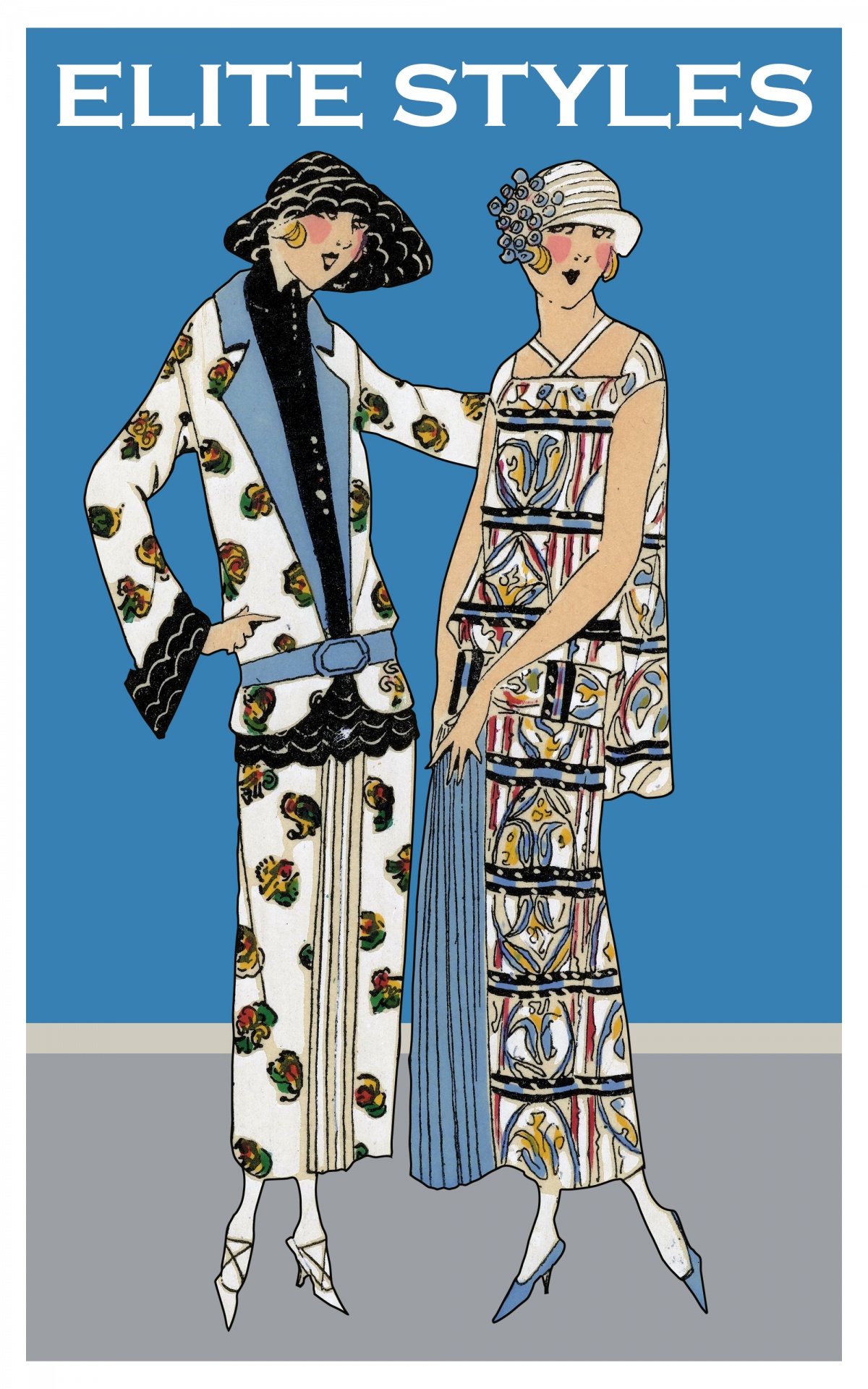 When does the law protect fashion brands? And what is the cost to other artists? Our firm answered these questions in this posts inspired by the Fall 2022 Fashion Weeks taking place around the world. Prominent fashion designers have been known to incorporate logos of other brands into their designs, often as a part of social commentary. Even where artistry is the intent behind the repurposed logo, these designers face financially devastating intellectual property claims from major the brands and companies who own the rights to the logo. Our firm considered how to balance protecting consumers from consumer confusion with giving designers the artistic liberty to create fashion that sparks social commentary. Read more on our website.
When does the law protect fashion brands? And what is the cost to other artists? Our firm answered these questions in this posts inspired by the Fall 2022 Fashion Weeks taking place around the world. Prominent fashion designers have been known to incorporate logos of other brands into their designs, often as a part of social commentary. Even where artistry is the intent behind the repurposed logo, these designers face financially devastating intellectual property claims from major the brands and companies who own the rights to the logo. Our firm considered how to balance protecting consumers from consumer confusion with giving designers the artistic liberty to create fashion that sparks social commentary. Read more on our website.
New York Raises Holocaust Awareness Through New Law

Gustav Klimt’s Woman in Gold
New York State now requires museums to post which artworks on display have links to the Holocaust. The New York bill, which was signed into law on August 10, 2022, accompanied two other Holocaust related bills aimed to combat rising reports of antisemitism. Our firm revisited the difficulty of proving provenance for items acquired during the Holocaust and shortly following WWII. The restitution of these works to families from which the pieces were stolen is incredibly healing.Unfortunately, such claims for the return of priceless works of art often have to overcome enormous legal hurdles, such as the difficulty of proving provenance in court and FSIA claims brought by countries who now claim possession. Read more on our website.
LAW FIRM UPDATES AND EVENTS
New Team Members
Our firm welcomed two new members to join our team, Yelena Ambartsumian and Maria Cannon. Yelena joins the firm as Counsel, while Maria joins us as an associate. We are proud to have Yelena and Maria as members of our team, and we wish them both a warm welcome.
Firm Founder Listed by Chambers
This year, firm founder Leila A. Amineddoleh was recognized by Chambers and Partners High Net Worth Guide for her work in Art and Cultural Property Law. The publication named Leila “a brilliant attorney,” and “a go-to for cultural property matters.” The publication also remarked on her passion for art law and her wealth of experience in the field. Read more here.
Art Law Conferences
Congratulations to our firm’s founder Leila A. Amineddoleh, who successfully chaired the 14th Annual NYCLA Art Law Institute, one of the most anticipated events of the year. Earlier in the year, in March, Leila presented the keynote speech at Yale University’s conference “Dura-Europos: Past, Present, and Future.” The conference focused on the systematic looting of Dura-Europos that took place during the Syrian civil war and during prior millennia. Leila presented on the history of cultural heritage looting and modern efforts to prevent such plunder. Read more about the conference here.
Leila was also a speaker at the Salmagundi Club, one of the oldest arts organizations in the U.S. Her other speaking engagements included moderating a panel for Art Appraisers’ Association Art Law Day and for Fordham’s Intellectual Property Law Journal’s 30th Annual Symposium, “Duplicate, Decolonize, Destroy: Current Topics in Art and Cultural Heritage Law.” In addition, she spoke at conferences hosted by Cardozo School of Law and Notre Dame School of Law. At Cardozo School of Law, Leila spoke on a panel at a symposium discussing cultural property ownership. Read more here. At Notre Dame’s Journal of International and Comparative Law Symposium, she served as panelist at the symposium, “International and Comparative Approaches to Culture”, and discussed antiquities disputes and repatriation of cultural heritage.
Associate Claudia Quinones presented on the “What’s New in Art Law?” panel at the 14th Annual NYCLA Art Law Institute. Her presentation covered title and ownership disputes, new technologies, and climate change activism in the art world. Details about the conference can be found here.
Yelena’s speaking engagements included Fordham Law School’s 30th Annual Intellectual Property Law Journal Symposium as a panelist on “Erased: Protecting Cultural Heritage in Times of Armed Conflict.” She also was a panelist at American University of Armenia’s Center for Truth and Justice Inaugural International Conference, “Cultural Heritage at Stake: How to Preserve, Mitigate Damage, and Punish Destruction.” Read more about the conference here.
IN THE PRESS
Leila appeared in the New York Times a number of times this year, in addition to Artnet, The Art Newspaper, the Observer, the Washington Post, USA Today, People Magazine, and Town + Country Magazine. She discussed a variety of topics, including the art market, cultural heritage disputes, Nazi-looted art, intellectual property disputes, and art collecting practices. Leila also appeared on WPIX-NY and in a number of podcasts.
CLIENTS AND REPRESENTATIVE MATTERS
Sculpture Garden Commission at the Smithsonian Institution
We are very proud to have served as legal counsel to famed artist Hiroshi Sugimoto for a number of his commissions, including his highly anticipated sculpture garden at the Hirshhorn Museum, part of the Smithsonian Institution.
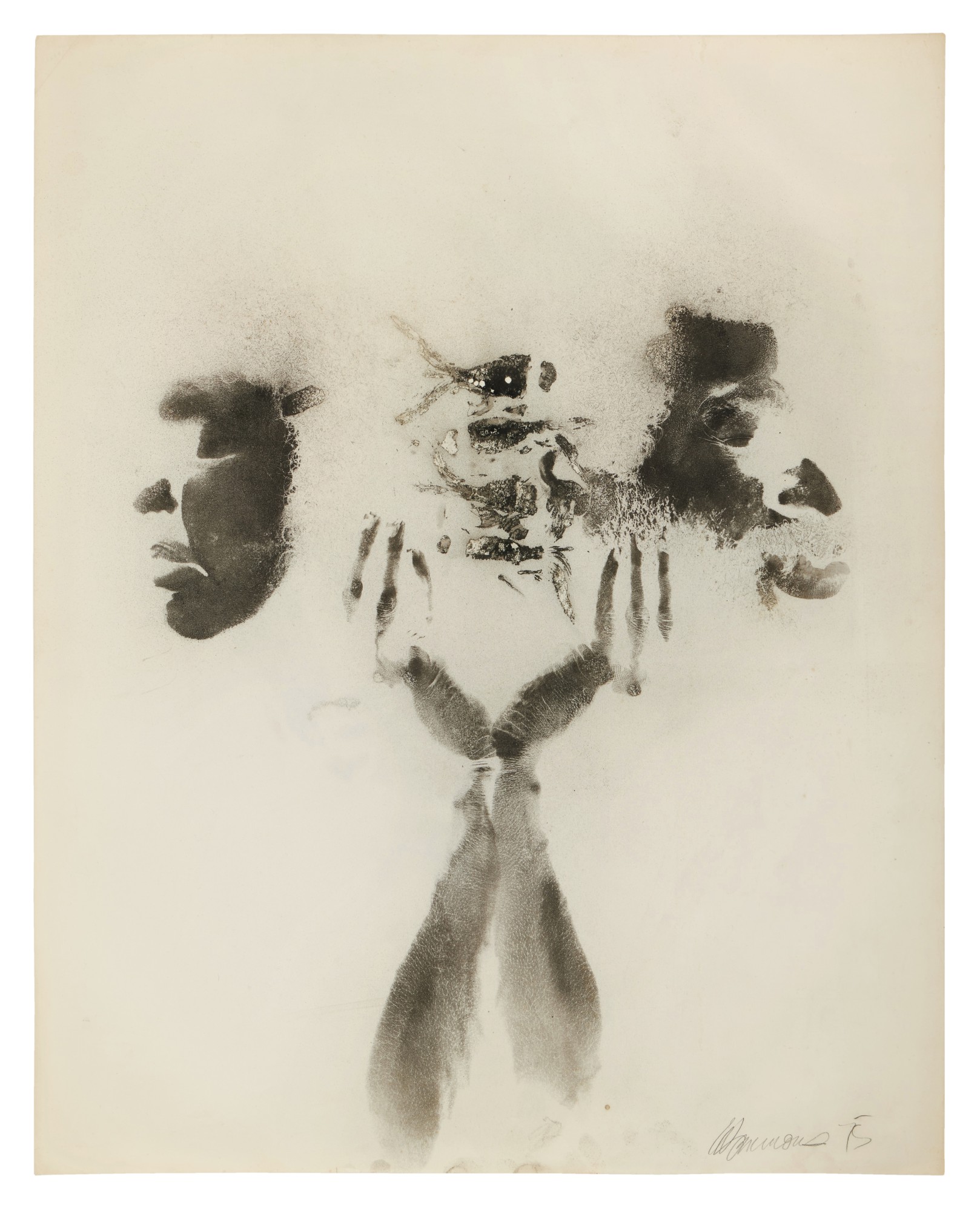 Auction Sales
Auction Sales
We worked with a number of clients to assist them with consigning art for sale at auction. One of our clients is the collecting family that consigned three works by David Hammons for the Sotheby’s Contemporary Evening Auction and one work at the Contemporary Curated sale earlier in the spring. Sotheby’s touted these works and their provenance, after the paintings remained with our clients for nearly five decades. All four of the works performed well, with two of them selling for above their high estimates.
Trademark Clients
We continue working with brands, artists, and companies by advising and serving as trademark prosecutors. Included among our clients are luxury watch brands, fragrance companies, and musicians, including multi-platinum songwriter and produced Jonas Jeberg.
Advising Art Market Players on New Platforms
While we often work with traditional art market participants (including artists, collectors, foundations, auction houses, museums, art advisors, and art experts), we are also happy to be at the forefront of the art and cultural world. As new art platforms and technologies develop, we are pleased to work with exciting online galleries, NFT platforms, novel art collecting exchanges, and artists exploring new media. We look forward to continue cutting edge work in the art sector.
On behalf of Amineddoleh & Associates, we wish you a happy and healthy holiday season and a wonderful and prosperous new year.
 Our founder, Leila Amineddoleh, has recently been featured in New York Metro Super Lawyers Magazine, alongside other leaders in her field. Leila was chosen for the piece as a top-rated intellectual property, art, and cultural heritage lawyer well-known in the industry for getting the job done right. This means advocating both for her clients, and for the art and cultural heritage at issue.
Our founder, Leila Amineddoleh, has recently been featured in New York Metro Super Lawyers Magazine, alongside other leaders in her field. Leila was chosen for the piece as a top-rated intellectual property, art, and cultural heritage lawyer well-known in the industry for getting the job done right. This means advocating both for her clients, and for the art and cultural heritage at issue.









 When does the law protect fashion brands? And what is the cost to other artists? Our firm answered these questions in this posts inspired by the Fall 2022 Fashion Weeks taking place around the world. Prominent fashion designers have been known to incorporate logos of other brands into their designs, often as a part of social commentary. Even where artistry is the intent behind the repurposed logo, these designers face financially devastating intellectual property claims from major the brands and companies who own the rights to the logo. Our firm considered how to balance protecting consumers from consumer confusion with giving designers the artistic liberty to create fashion that sparks social commentary. Read more on our
When does the law protect fashion brands? And what is the cost to other artists? Our firm answered these questions in this posts inspired by the Fall 2022 Fashion Weeks taking place around the world. Prominent fashion designers have been known to incorporate logos of other brands into their designs, often as a part of social commentary. Even where artistry is the intent behind the repurposed logo, these designers face financially devastating intellectual property claims from major the brands and companies who own the rights to the logo. Our firm considered how to balance protecting consumers from consumer confusion with giving designers the artistic liberty to create fashion that sparks social commentary. Read more on our 

 Auction Sales
Auction Sales